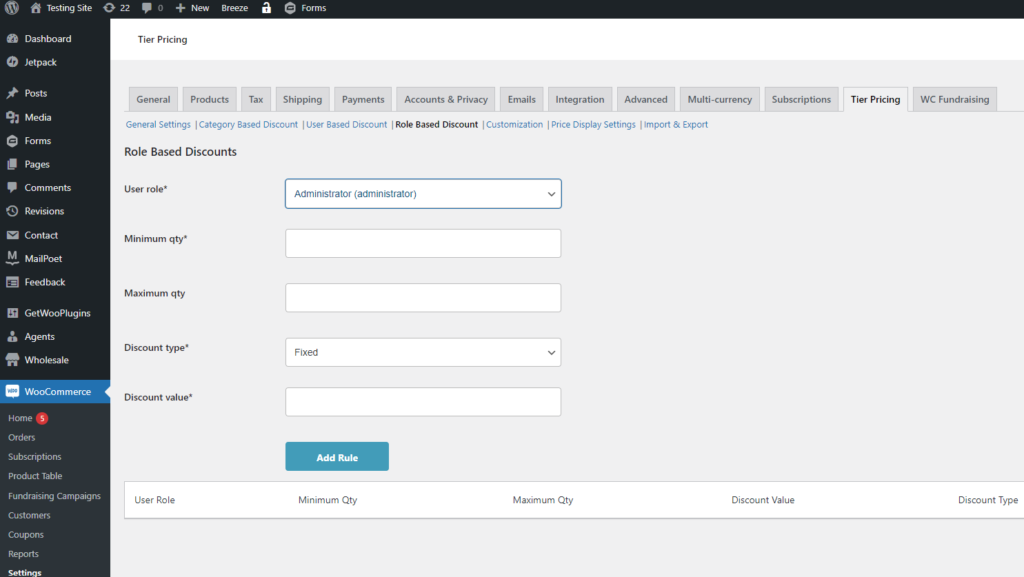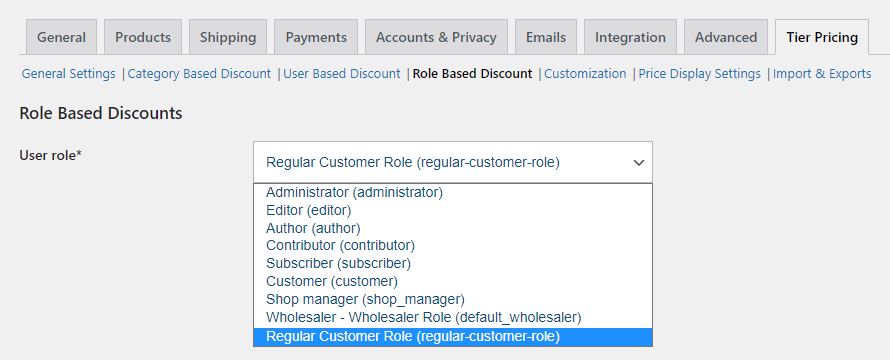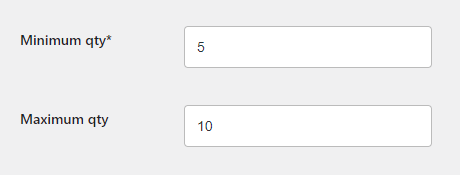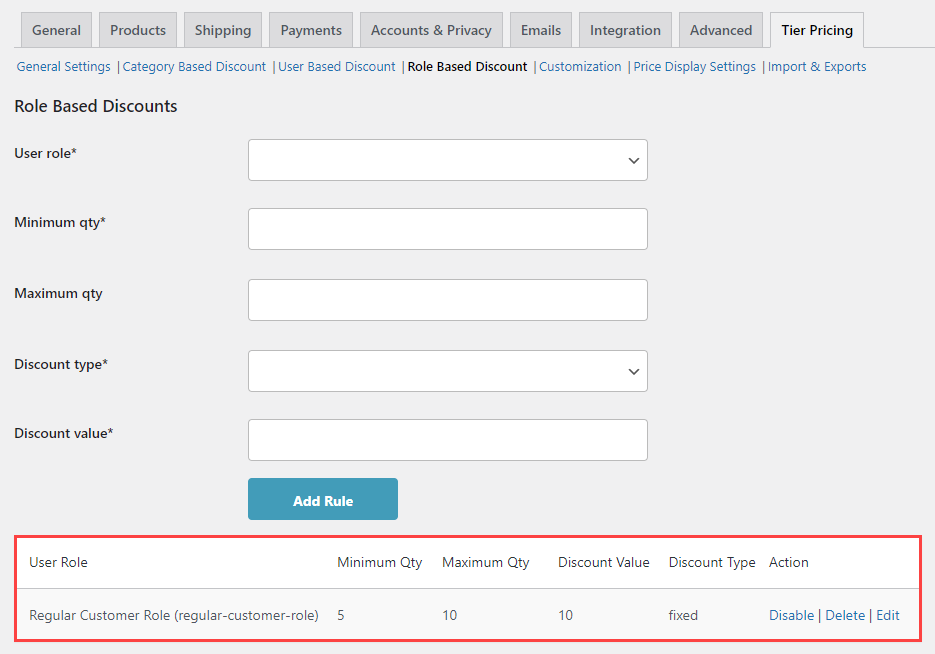Are you looking for a way to offer targeted discounts to specific groups of customers on your WooCommerce store? Well, look no further! In this blog post, we’ll show you how to configure user-role-based discounts in just a few easy steps.
Whether you want to reward loyal customers or entice new ones with special deals, this feature will boost your sales and enhance customer satisfaction. So, let’s get started and unlock the power of personalized pricing!
What are the Most Common User Roles in WordPress?
The most common WordPress user roles include Administrator, Editor, Author, Contributor, and Subscriber. Each user role has a specific set of permissions and capabilities that determine the level of access to various WordPress site features and functions.
1. Administrator
The administrator is the most powerful user role in WordPress. It grants full access to all site features, including the ability to add and delete plugins, themes, and users and edit and publish all content on the site. This role suits site owners or web developers responsible for managing the site’s backend.
2. Editor
The editor is responsible for managing the content on the site, including the ability to create, edit, and publish posts and landing pages. This user role is suitable for trusted individuals responsible for creating and maintaining high-quality content on the site.
3. Author
The author is responsible for creating and publishing their content on the site, but they cannot edit or publish content created by other users. This role suits bloggers or content creators who contribute to the site regularly.
4. Contributor
The contributor role is similar to the author role but has limited capabilities. Contributors can create and edit their content but cannot publish it. Instead, an Editor or Administrator must review and approve their content before publication.
5. Subscriber
The subscriber role is the most limited user role, as it only allows users to view site content and manage their profile information. This role suits visitors who register for the site or for members who need access to restricted content.
Understanding the different WordPress user roles is essential for effective user management and ensuring each user has the appropriate level of access to perform their role on the site.
Assigning user roles based on their responsibilities and limiting access to sensitive site features is vital to prevent unauthorized access or accidental damage.
What is User-Role-Based Discounting?
User-role-based discounting in WooCommerce is a powerful feature that allows online store owners to provide discounts to specific users or user roles. This feature enables store owners to create targeted promotions for different groups of customers, thereby increasing customer retention and driving sales.
However, before implementing it in your online store, it is vital to consider the pros and cons of user-role discounting in WooCommerce.
Pros:
- Increased customer retention: User-role-based discounting in WooCommerce allows online store owners to reward loyal customers with exclusive discounts. Store owners can increase customer retention and loyalty by providing deals to specific user roles or users.
- Targeted promotions: With user-role discounting in WooCommerce, store owners can create targeted promotions for specific user roles or users. This allows for more effective marketing campaigns to increase sales and revenue.
- Increased customer satisfaction: Providing targeted discounts to specific user roles or users can increase customer satisfaction, as they feel valued and appreciated by the store owner.
Cons:
- Potential for abuse: User-role-based discounting in WooCommerce can be abused by users who create multiple accounts to take advantage of the discounts. This can lead to a loss of revenue for the store owner.
- Complexity: Implementing user-role discounting in WooCommerce can be complex, requiring the creation of different user roles and assigning discounts to each role. This can be time-consuming and may require technical expertise.
- Maintenance: User-role discounting in WooCommerce requires ongoing maintenance to ensure that the discounts are applied correctly and that there are no technical issues.
How Do You Configure Role-Based Discounting On Your Online Store?
For this tutorial, we’ll be using Tiered Pricing for WooCommerce plugin. Once you’ve installed and activated this plugin on your site, follow these steps to offer discounts based on user roles.
- Navigate to WooCommerce > Settings > Tier Pricing > Role-Based Discount.
- Next, choose the user role you want to apply for the discount by clicking the dropdown.
- Set the Minimum and Maximum quantities according to your requirements. It is a mandatory field.
- Choose the type of discount you’d like to offer.
- Add the discount value and click on “Add Rule.”
- Once you’ve clicked on Add Rule, the discount will appear below.
- After creating, you can disable, enable, delete, and edit any rule.
Once you’ve added the discount rule for a specific user role, the effect will appear on the front end for all customers you’ve assigned that specific role after they log in.
Wrap Up
User-role-based discounts are a compelling way to reward your customers for their patronage. However, setting up user-role discounts can be daunting if you’re unfamiliar with WooCommerce’s settings menus.
In this article, we have shown you how to configure user-role-based discounts in WooCommerce using simple steps that anyone can follow. So, whether you’re a seasoned WooCommerce user or just starting, our guide will help you begin configuring user-based discounts quickly!
FAQs
Q. Can WordPress Users Have Multiple Roles?
Yes, WordPress users can have multiple roles. This is helpful for users wanting a more varied and complex role on their website. Multiple roles also give you access to different site areas, making you more efficient.
Q. How Do I Restrict Content by User Roles in WordPress?
To restrict content by user roles in WordPress, go to the Admin Area and click the Users tab. There, you will find a Role dropdown menu, and you can choose which roles have access to which types of posts and pages.





